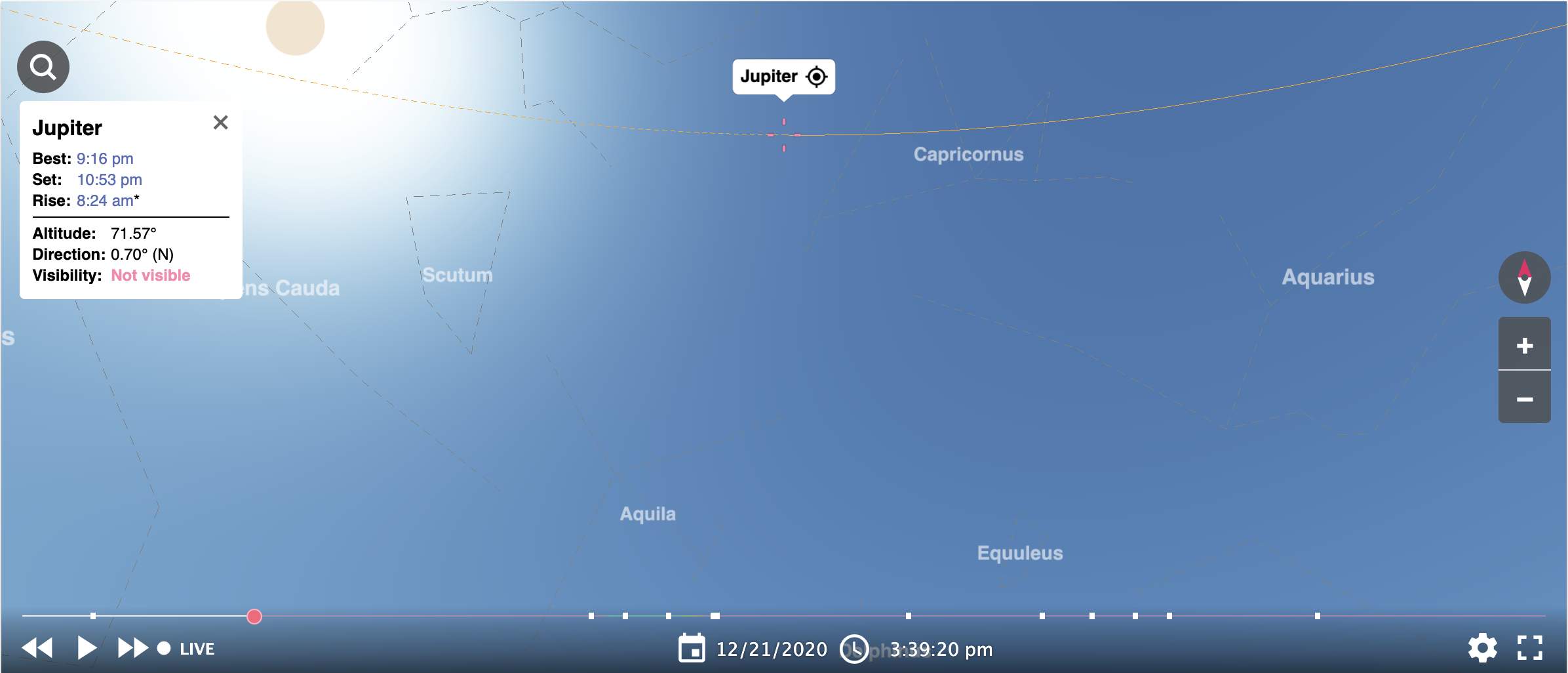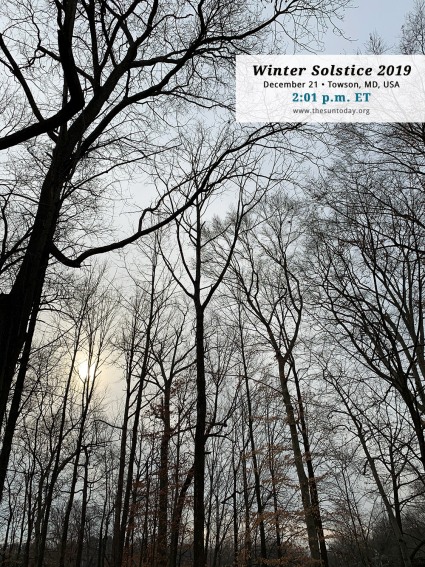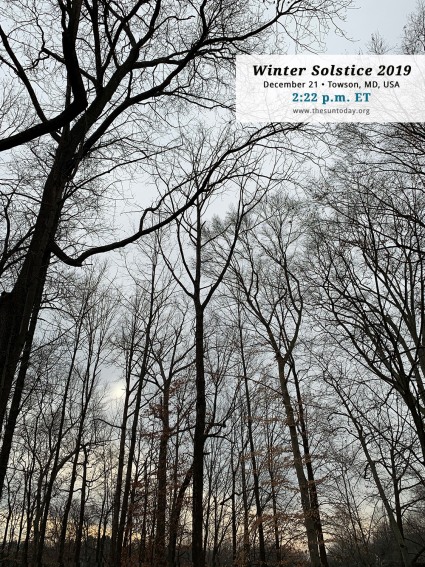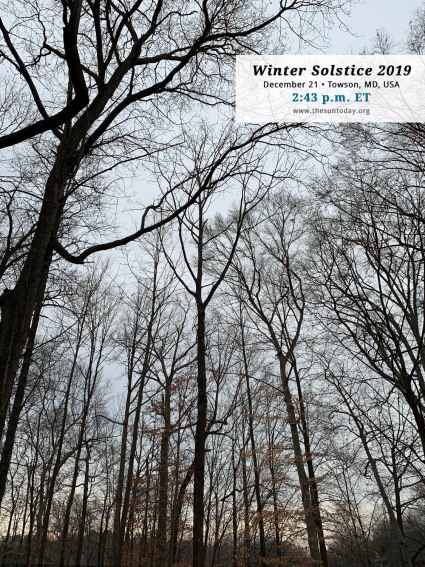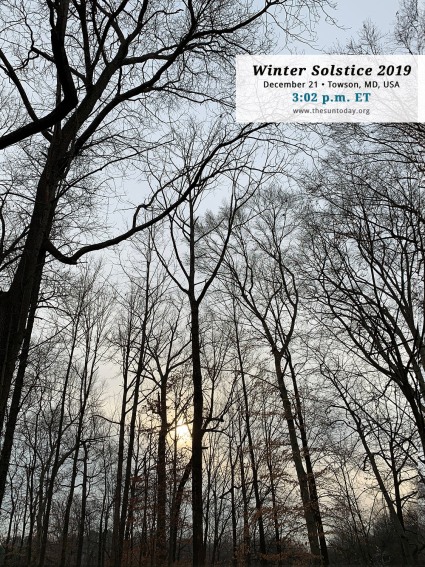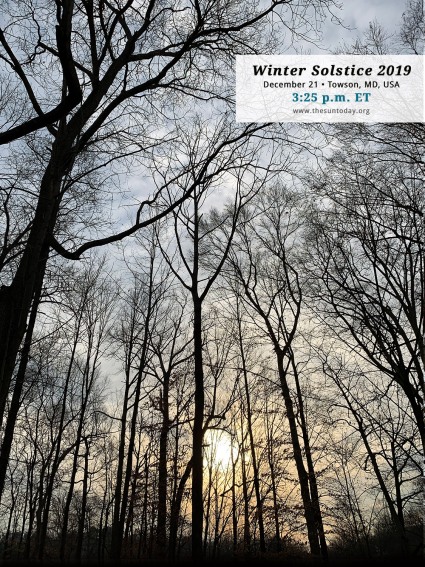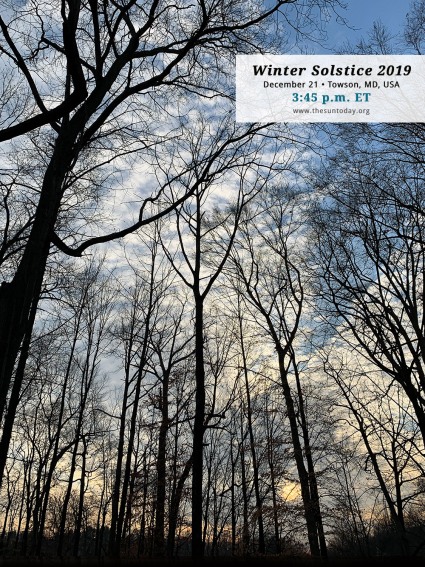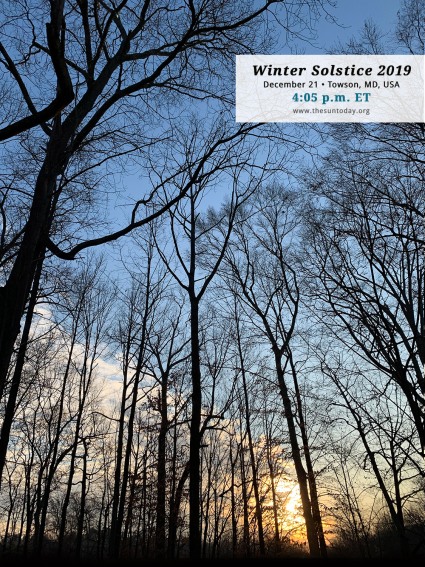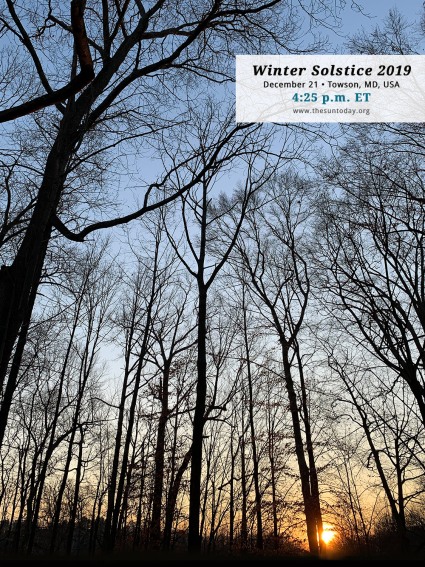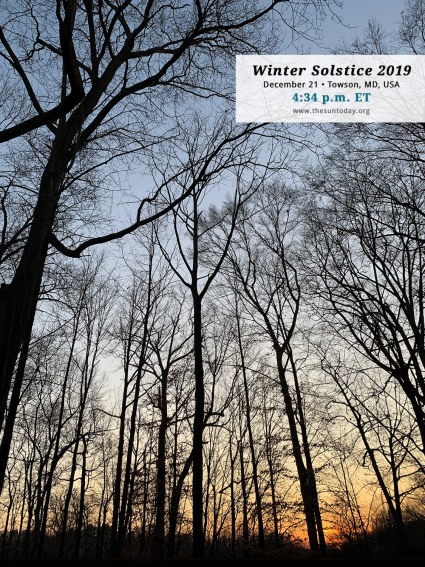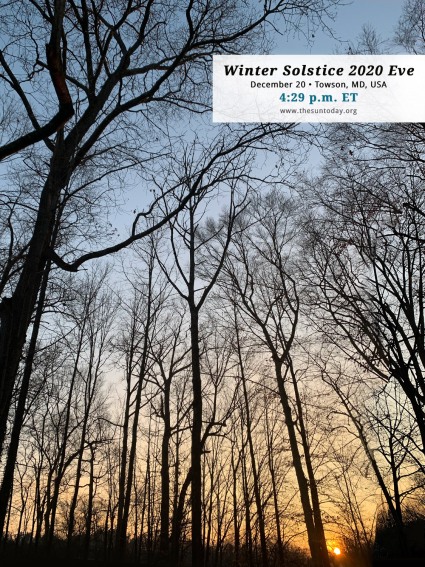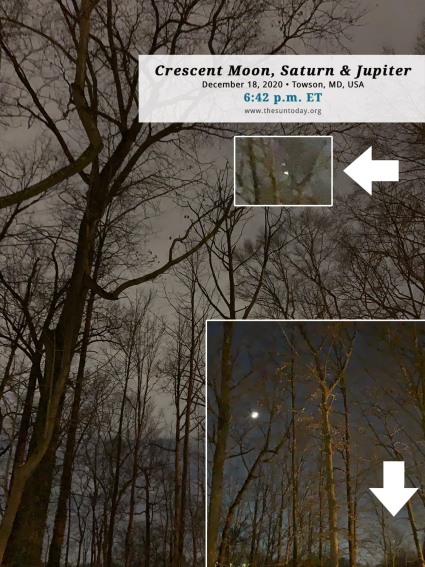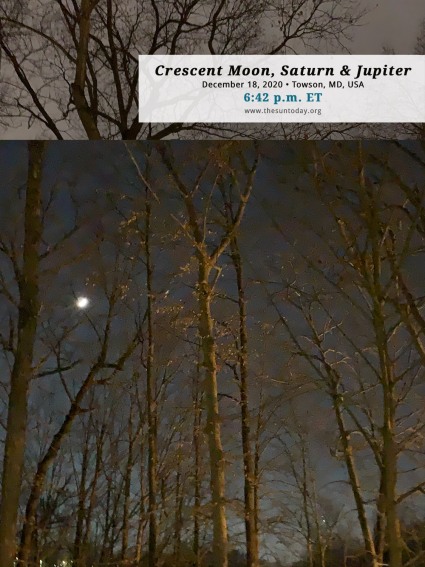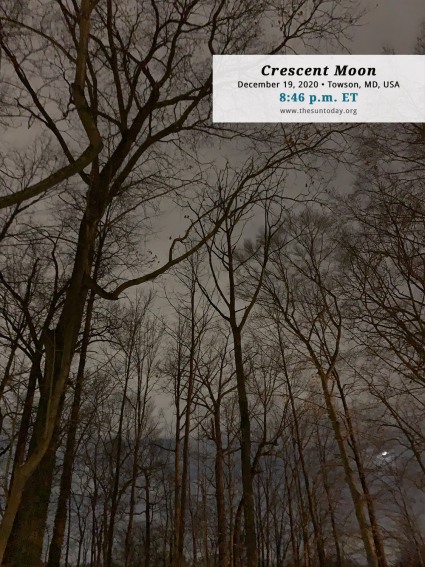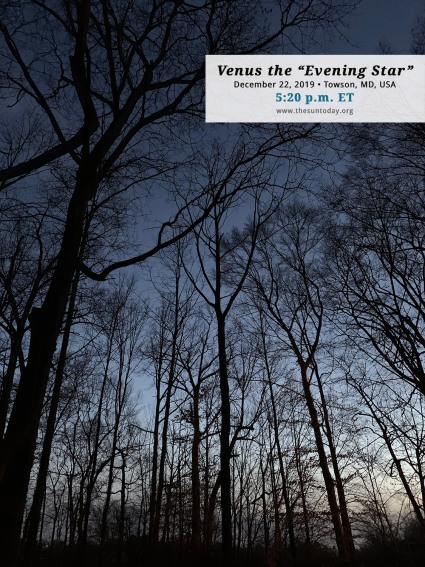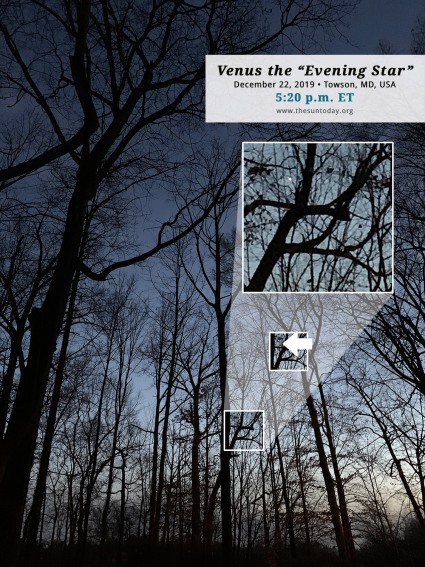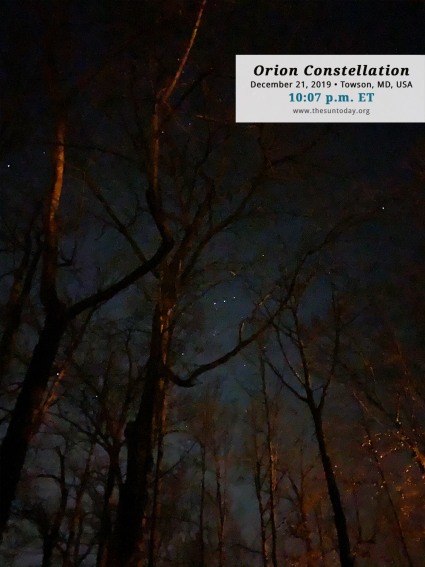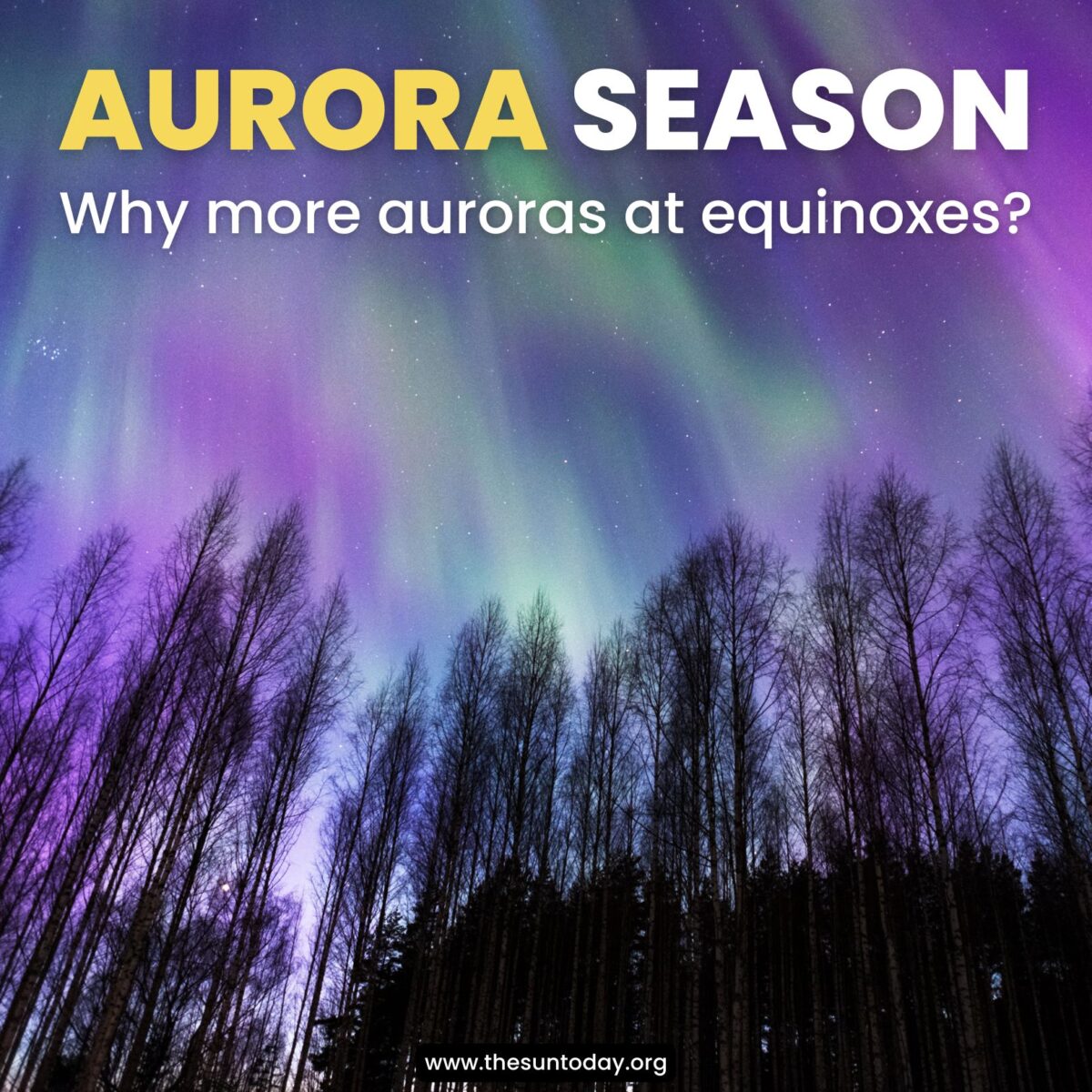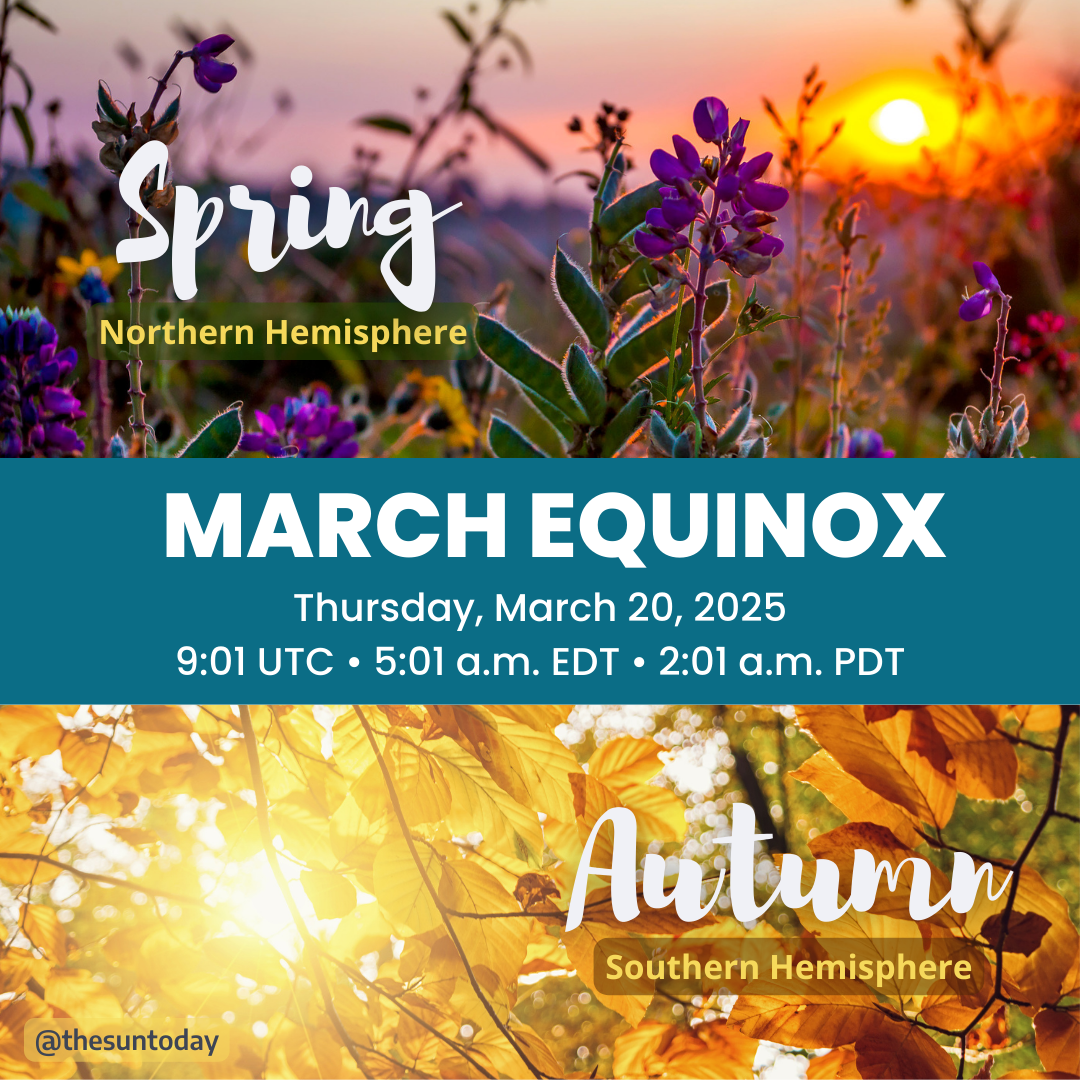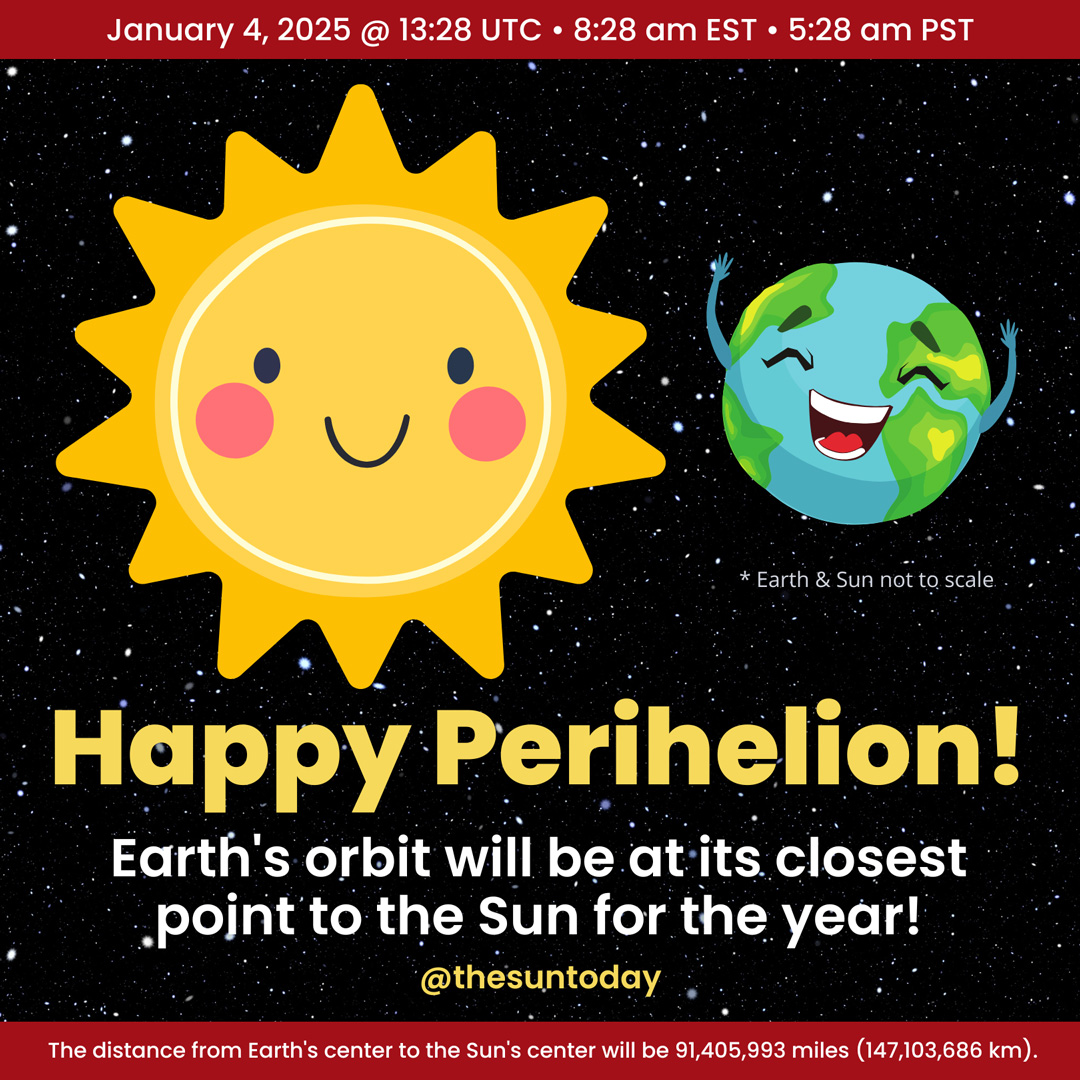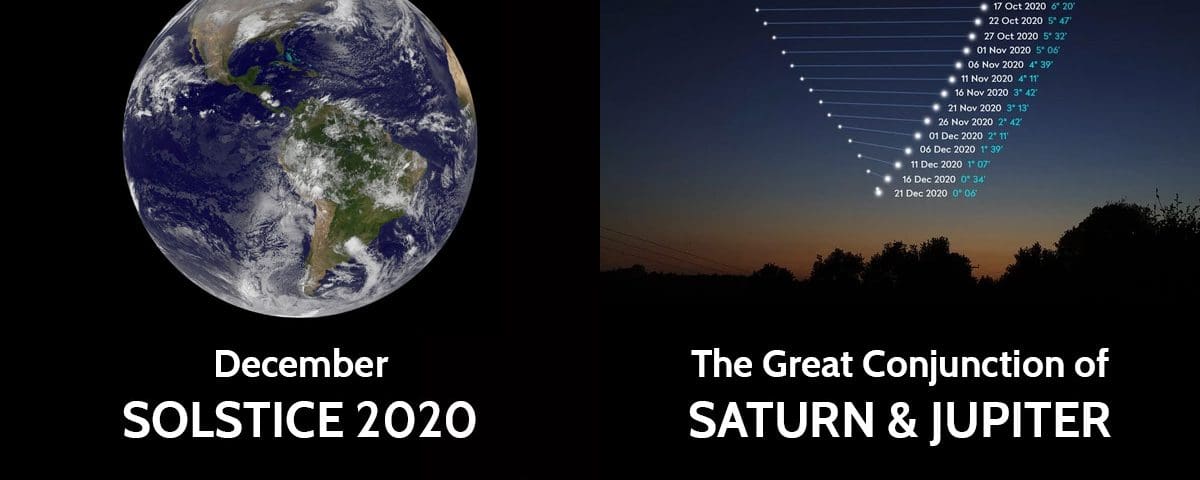
December 21, 2020 (aka 21 December 2020)* is an amazing day for astronomy lovers!
👀 🔭 🧐 ☀️ 🌙 🪐 🟠 🔴 ⚪ ☀️ 🌟 ✨ ⭐ 🌞 🌚 🌕 🌎 🌅 🌇 😃 🤩
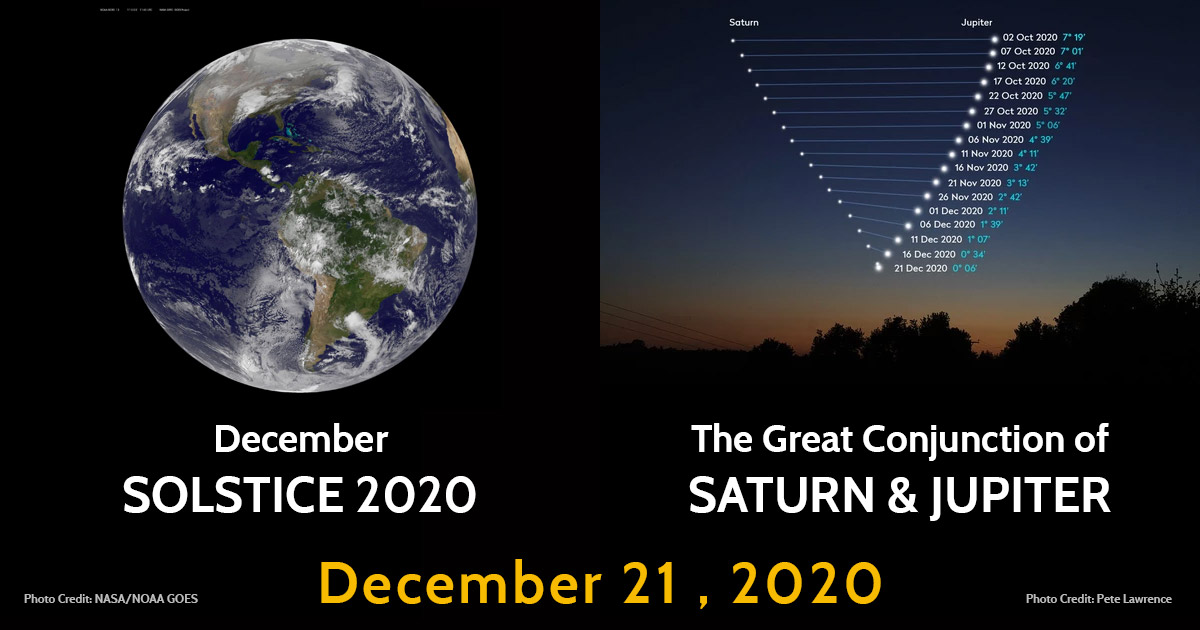
It is the December solstice, which occurs at 10:02 UTC. See some fun time zone conversions below.
This is the first official day of winter for the Northern Hemisphere and summer for the Southern Hemisphere. The solstice is an important marker for our seasons.
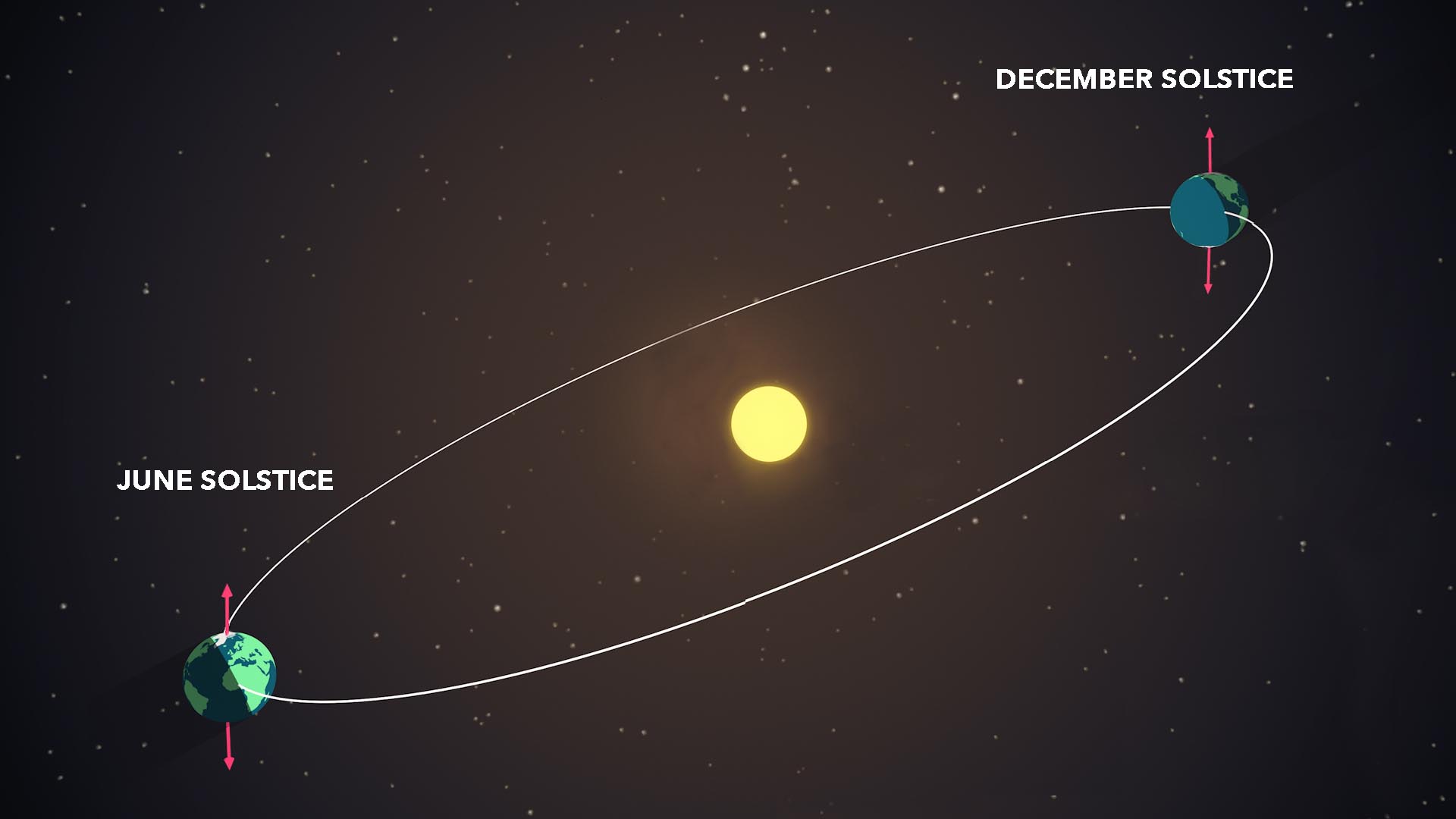
During the solstices, Earth reaches a point where its tilt is at the greatest angle to the plane of its orbit, causing one hemisphere to receive more daylight than the other. (NASA/Genna Duberstein)
- There are two solstices in a year, the June solstice (usually June 21) and the December solstice (usually December 21).
- On the June solstice, the sun reaches its highest point in the sky for an observer at the North Pole.
- On the December solstice, the sun reaches its highest point in the sky for an observer at the South Pole.
- Solstices also mark the change from fall to winter or spring to summer.
You can find out more about the solstice from our post last year.
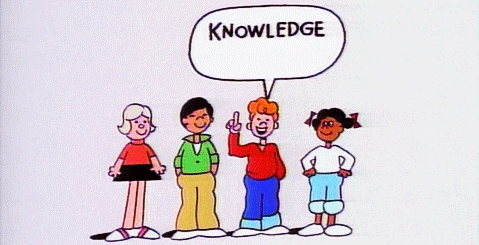
Fun with Time Zones, Longitudes & Latitudes
What time does the solstice happen? Well, that depends on where you live. Everywhere in the same time zone will have the same time for the solstice, whether you are in the Northern or Southern Hemisphere.
- “Time zones give specific areas on the Earth a time of day that is earlier or later than the neighboring time zones. This is because when it is daytime on one side of the earth, it is night-time on the other side. … Greenwich Mean Time is now called UTC (Coordinated Universal Time). UTC is the time standard of the world.” (SOURCE)
- “A longitude is an angle from the prime merdian, measured to the east (longitudes to the west are negative).
- Latitudes measure an angle up from the equator (latitudes to the south are negative).” (SOURCE)
The longitude & latitude of your location determines the amount of sunlight you’ll get.
In the Northern Hemisphere, it’s the shortest day of sunlight year, with an exception if you’re within the Arctic Circle, like Utqiagvik, Alaska. The sun in this city is down all day—with the last sunset on 11/18/2020 at 1:29pm. The next sunrise is 1/22/2021 at 1:16pm!
- In the Southern Hemisphere, it’s summertime with the longest days.
- Your location within the time zone, such as further west, also impacts the time.
- Honestly, this is hurting our brains a bit to try and figure out why…so this post is just going to make notes of this. We’ll circle back later with more details.
Like many people in 2020, our sense of time is off with drastic changes to our schedules and no travel. Let’s have some fun looking at various places around the world to compare when the Solstice occurs, and sunrise & sunset times. Check out the big changes in sunrise & sunset times.
| LOCATION | TIME ZONE | From GMT | SOLSTICE DAY | SOLSTICE TIME | SUNRISE | SUNSET | NOTES |
|---|---|---|---|---|---|---|---|
| Surfer Paradise, Australia | AEST (Australian Eastern Standard Time) | GMT +10 | Mon, Dec 21 | 8:02 PM | 4:46 AM | 6:42 PM | Southern Hemisphere |
| Tokyo, Japan | JST (Japan Standard Time) | GMT +9 | Mon, Dec 21 | 7:02 PM | 6:47 AM | 4:31 PM | Northern Hemisphere |
| TIME STANDARD | UTC (Universal Time Coordinated) | GMT +0 | Mon, Dec 21 | 10:02 AM | Not a time zone | ||
| Dublin, Ireland | GMT (Greenwich Mean Time) | GMT +0 | Mon, Dec 21 | 10:02 AM | 8:38 AM | 4:08 PM | Same as GMT |
| Panguipulli, Chile | Chile Summer Time (CLST) | GMT-3 | Mon, Dec 21 | 7:02 AM | 6:18 AM | 9:17 PM | Southern Hemisphere |
| Gander, Newfoundland | NST (Newfoundland Standard Time) | UTC – 3h30 m | Mon, Dec 21 | 6:32 AM | 7:59 AM | 4:13 PM | What?! 30-mins off?! |
| Towson, Maryland | EST (Eastern Standard Time) | GMT -5 | Mon, Dec 21 | 5:02 AM | 7:23 AM | 4:46 PM | Our home! |
| Durham, New Hampshire | CST (Central Standard Time) | GMT -6 | Mon, Dec 21 | 4:02 AM | 7:12 AM | 4:11 PM | Home of Alex’s alma mater, UNH |
| Carbondale, Illinois | 7:08 AM | 4:41 PM | Crossroads of the Eclipse | ||||
| Fortuna, North Dakota | 8:46 AM | 5:00 PM | Close to the US/Canadian border | ||||
| Boulder, Colorado | MST (Mountain Standard Time) | GMT -7 | Mon, Dec 21 | 3:02 AM | 7:19 AM | 4:39 PM | Home of lots of space science |
| San Francisco, California | PST (Pacific Standard Time) | GMT -8 | Mon, Dec 21 | 2:02 AM | 7:21 AM | 4:54 PM | Linda’s old home |
| Fairbanks, Alaska | AKST (Alaska Standard Time) | GMT -9 | Mon, Dec 21 | 1:02 AM | 10:58 AM | 2:40 PM | Home of Alex’s colleagues |
| Utqiagvik, Alaska | Above the Arctic Circle. The sun is down all day – last sunset was 11/18/2020 at 1:29pm. Next sunrise is 1/22/2021 at 1:16pm! | ||||||
| Hilo, Hawaii | HST (Hawaii Standard Time) | GMT -10 | Mon, Dec 21 | 12:02 AM | 6:50 AM | 5:47 PM | Home of the Astronomy – UH Hilo program |
| Midway Atoll National Wildlife Refuge* | SST (Samoa Standard Time) | GMT -11 | Sun, Dec 20 | 11:02 PM | 7:37 AM | 5:58 PM | Home of Wisdom albatross |
- * Midway Atoll National Wildlife Refuge has the solstice on Sunday, December 20, 2020
- Not many people live on Midway Atoll, but it’s the home of Wisdom the Albatross!
- She is at least 69-years-old and back for another mating season in 2020! Yay! Good news!!
- She can’t tell time so she doesn’t know the time zone or that she’s way older than the other mother birds. 🙂
- A 4:46am sunrise is perfect for Surfers Paradise, Australia! Wishing our friend who is moving there today a “G’Day Mate”!
- We thought that northern cities would have earlier sunsets, but not always! Fortuna, North Dakota has a 5:00 PM sunset, and Towson, Maryland has a 4:46 PM sunset.
- Take a gander at Gander, Newfoundland! (Sorry, could not resist that pun!)
- Look for another blog post soon as we try & figure out how to make sense of these times.
This is also the day of the Great Conjunction of Jupiter and Saturn…800 years in the making!
This day and the days leading up to it are a great time to get to know the planets and their relationship to the Sun.
If you follow the planets in the night sky, and these two, in particular, you might have noticed that they get closer and closer in the sky each day. On December 21st they are so close in the sky that to the naked eye they appear as one dot in the sky.
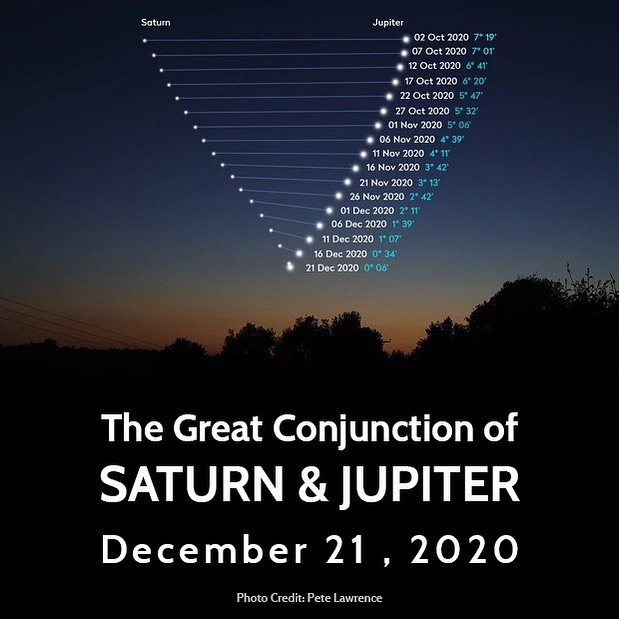
Saturn and Jupiter appear to close in on each other as the Great Conjunction 2020 approaches on 21 December (apparent distance given in degrees and arcminutes). Credit: Pete Lawrence, https://www.skyatnightmagazine.com/advice/skills/great-conjunction-jupiter-saturn/
At their closest, Jupiter and Saturn will be 0.1 degrees apart in the sky! This almost looks like one big planet.
That is 1/5th the size of the Moon, which has a size in the sky of 0.5 degrees. The conjunction of Jupiter and Saturn happens every 20 years, but the last time these two planets were this close in the sky was 1226.
- You can learn a lot more about our fun observing the planets leading up to the conjunction in our post, November-December 2020 Eclipse Season.
- Learn all about the details of the Great Conjunction at EarthSky and BBC Sky at Night.
- Here’s an awesome explainer video from the Lowell Observatory in Flagstaff, AZ. They have a live feed & premium access for more info.
CREDIT: Lowell Observatory, Image credits: – Alex Elbert and Sarah Gilbert – Massey/Neugent/Lowell Discovery Telescope/NSF – Sanborn/Neugent/Lowell Discovery Telescope/NSF
Don’t worry if you have clouds, there are live streams! YAY!!! You can watch it online!! 🌧 😄 👀 💻
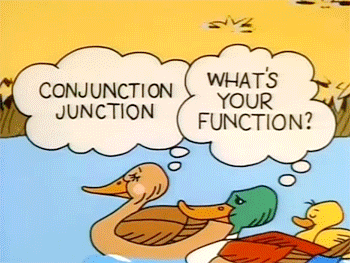
But what is the connection between the Solstice and the Great Conjunction?
Well, it is all about the tilt of Earth (~24 degrees) and the ecliptic, the path the Sun follows in the sky. The ecliptic is the key to finding the planets in the sky. The planets orbit in roughly a plane or pancake shape around the Sun. The Sun, Moon, and planets all basically follow this path, the ecliptic, through the sky.
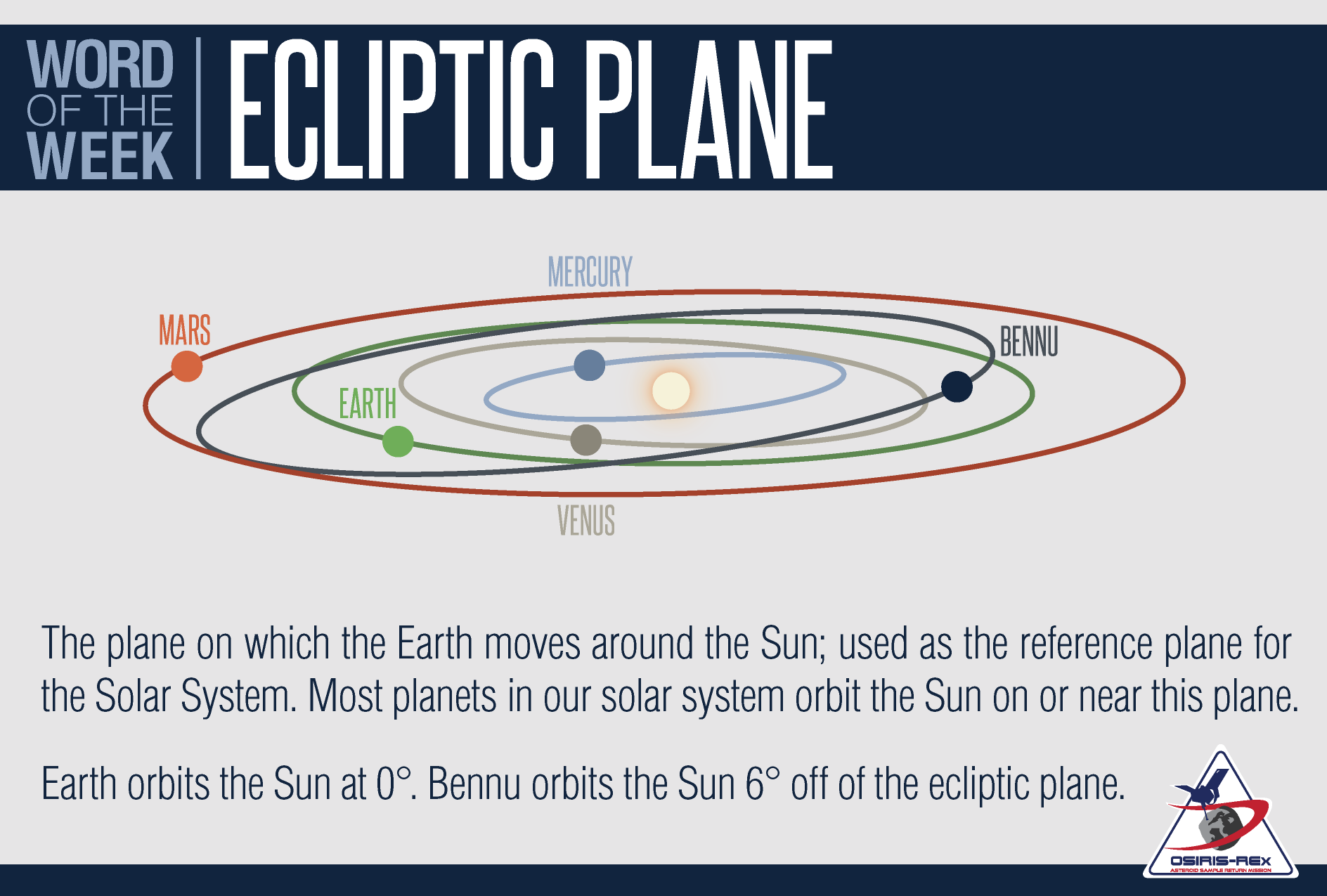
The plane on which the Earth moves around the Sun; used as a reference plane for the Solar System. Most planets in our solar system orbit the Sun on or near this plane. Earth orbits the Sun at 0 degrees. (Bennu is an asteroid that NASA is studying with the Osiris-Rex mission. Bennu orbits the Sun 6 degrees off of the ecliptic plane.) Credit: University of Arizona
Now the planets don’t follow this path exactly because they all are all slightly inclined with respect to the Sun-Earth plane but it is pretty close. The Moon is a bit different because its orbit is inclined 5-degrees from the ecliptic so it can move as much as 10 moons above or below the ecliptic. This is why we don’t have eclipses every month. Most of the time, the Moon is either above or below the Sun (see Eclipses.) Other objects that rotate our Sun, such as the asteroid Bennu, have paths that use the ecliptic as a reference point.
But the ecliptic still serves as an important reference point for where the Moon and planets are in the sky with respect to the path the Sun takes in the sky.
Since the Earth is tilted by 24-degrees, the location of the Sun in the sky and so the location of the ecliptic changes with the seasons, so that is where the Solstice comes into play.
This is why it is helpful to not just look at the planets on one day, but to watch how they change throughout the year.
Follow them every day or every week or even every month and you begin to learn the patterns of the sky. This is what planet and stargazing is all about. It starts with simple observing over time.
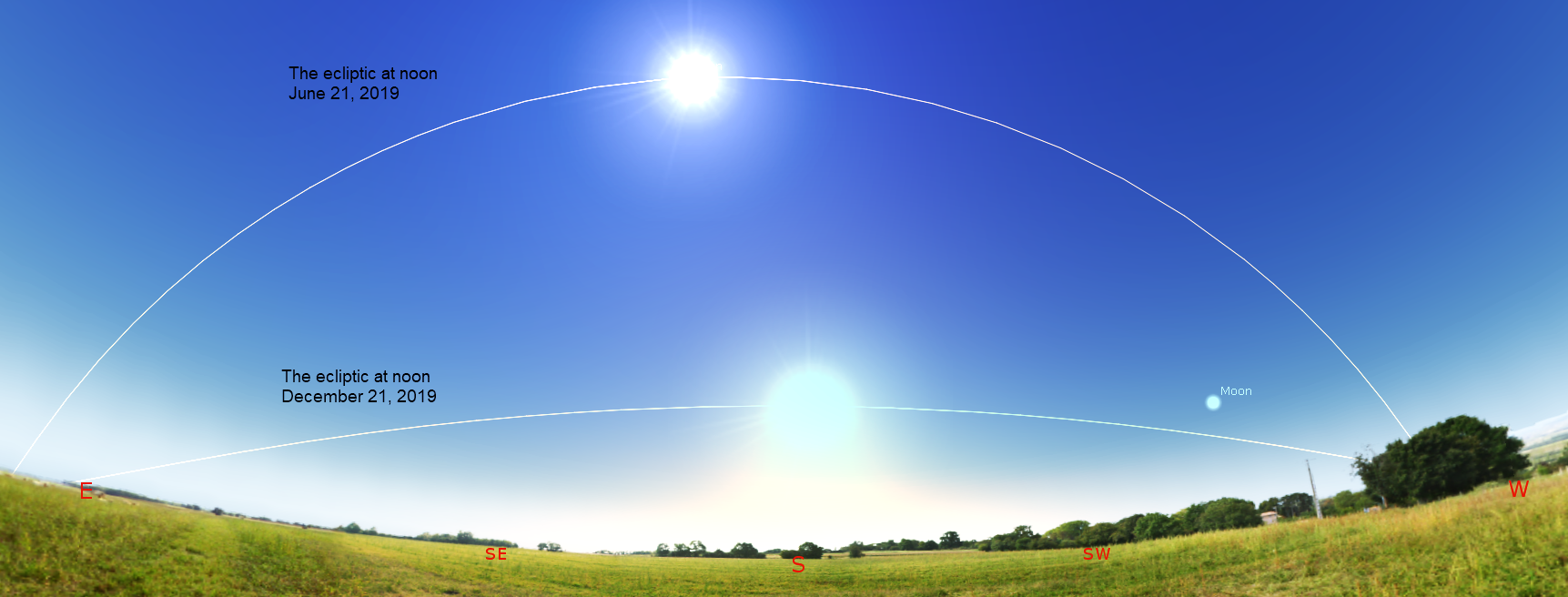
The ecliptic on June 21, 2019, and December 21, 2019. Image from Stellarium, https://earthsky.org/astronomy-essentials/definition-ecliptic-what-is-the-ecliptic
The figure above illustrates the changes in the location of the Sun in the sky and the ecliptic during the winter and summer in the northern hemisphere. It is done using the great free software Stellarium, which you can use to see the location of the Sun, planets, and stars in the sky at any given location on Earth.
Here is another look at how the ecliptic or the path of the Sun changes in the sky throughout the year and also how it compares between the Northern and Southern hemisphere at the same time of the year.
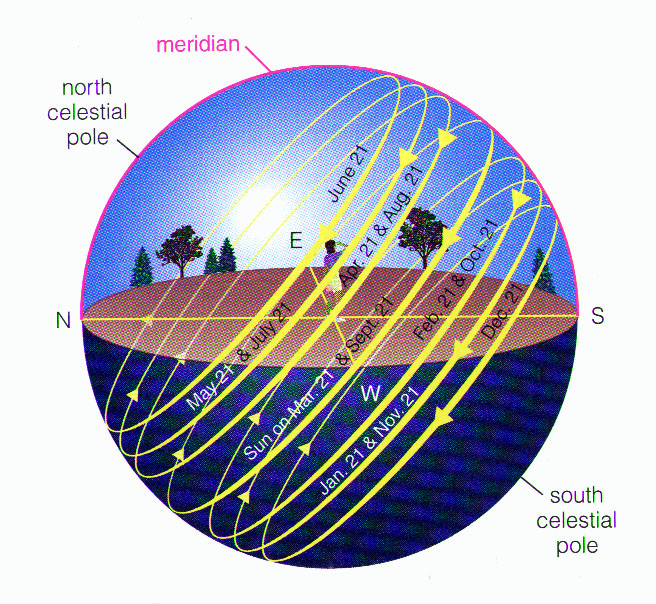
This picture helps to see the path of the Sun in the sky at different times of the year in both the Northern and Southern hemispheres. https://faculty.virginia.edu/ASTR1230/LECTURES/LECTURE5/lecture5C-s13.html
This illustration is helpful because it lets you compare the path of the Sun (the ecliptic) at a particular time of year in both hemispheres at the same time. In the Northern Hemisphere, notice that the Sun reaches its highest point much farther above the horizon in June than in December. The path is not only higher in the sky (higher above a person’s head) but the path is also longer meaning more sunlight or a longer day.
Another great tool and one that is very easy to use (Stellarium has a lot of features, which can make it complicated.) is the Night Sky tool from timeanddate.com.
We can use this tool to look at the location of Jupiter at it highest point in the sky for a location in the United States on Dec. 21, 2020.
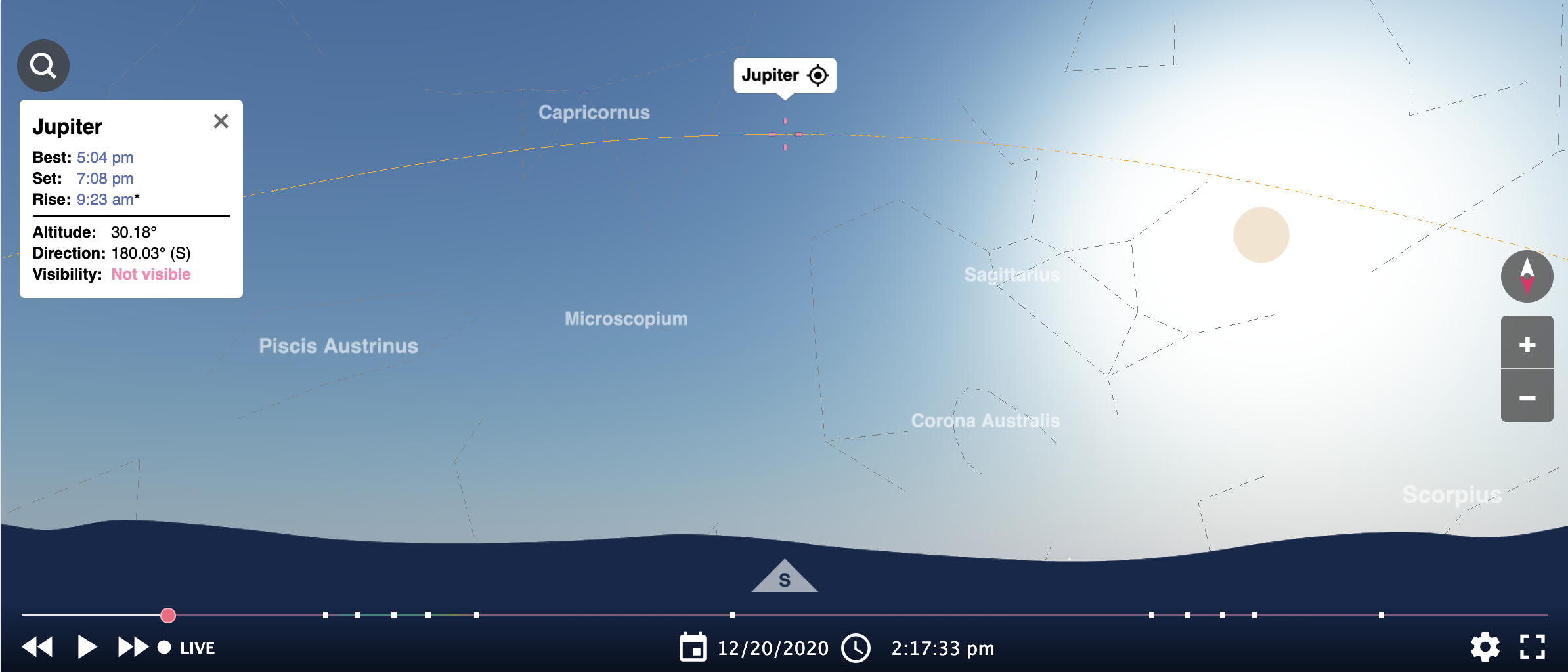
The highest point in the sky for Jupiter on Dec. 21, 2020 in the Northern Hemisphere. This point, called Meridian, has an altitude of 30-degrees.
We can also look at the highest point in the sky for Jupiter on the same day but in the Southern Hemisphere.
Here we are picking a point with roughly the same latitude but in the Southern Hemisphere.
Here Jupiter is much higher in the sky at it highest point. The Meridian in this location is almost 72-degrees altitude in the sky!
NOTE: Both of these graphics are daylight hours. It is lower in the sky, visible just shortly after sunset.
If you haven’t been watching Jupiter and Saturn leading up to the conjunction, just keep watching on the days after the conjunction.
Watch as many days as you can so you can notice the changes in the pattern. The pair will become visible just after sunset, lower and lower above the horizon and they will switch positions with Jupiter now on the left and Saturn on the right.
Here is a snapshot of the website In-the-sky.org’s 3D solar system viewer.
This shows both the orbits of the planets as if you were looking down on the solar system while showing you the location of the planets in your sky.
Click to open a larger version in a new window.
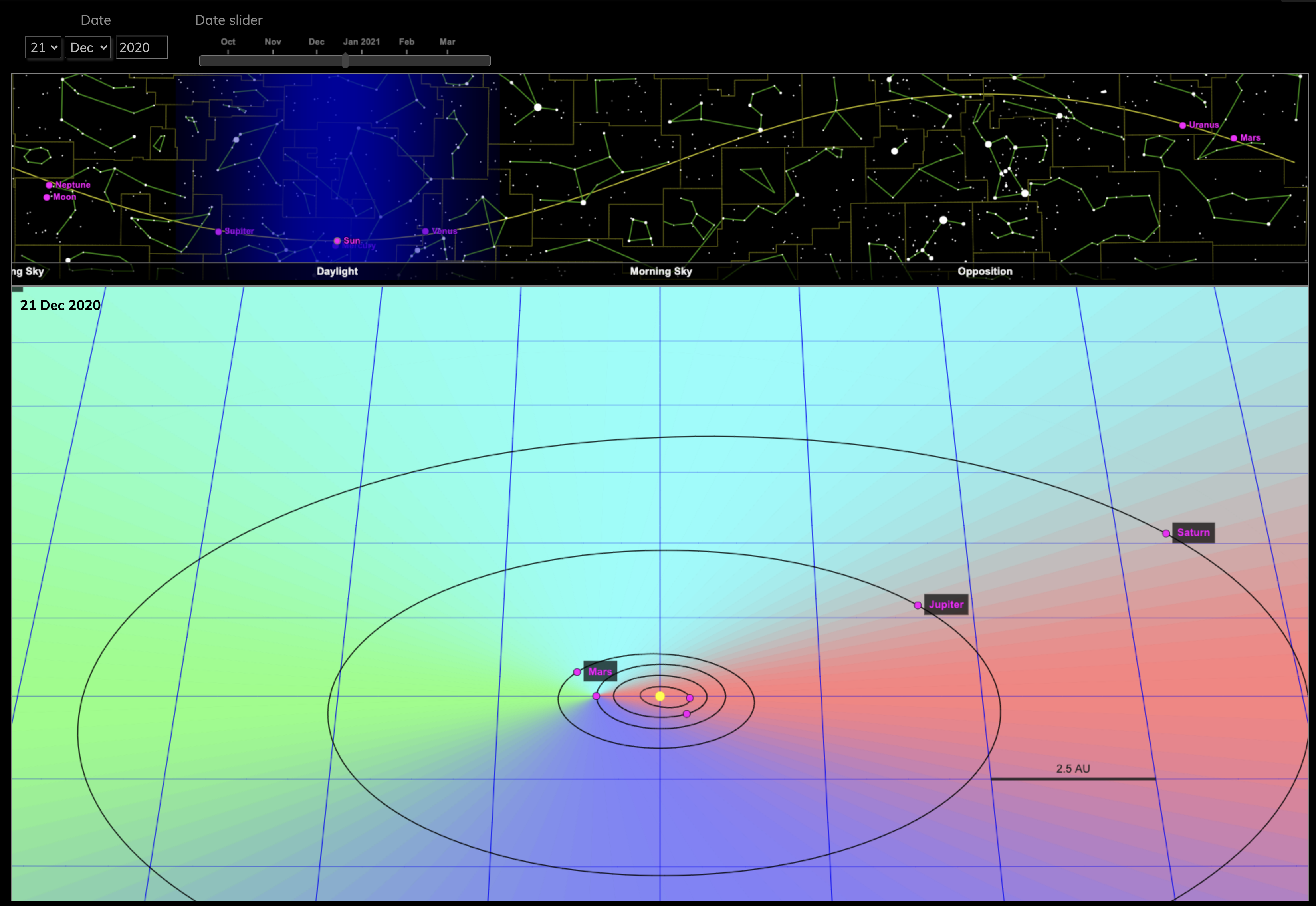
The In-The-Sky.org 3D solar system viewer on December 21, 2020. This shows both the location of the planets in the solar system and the placement in the day and night sky.
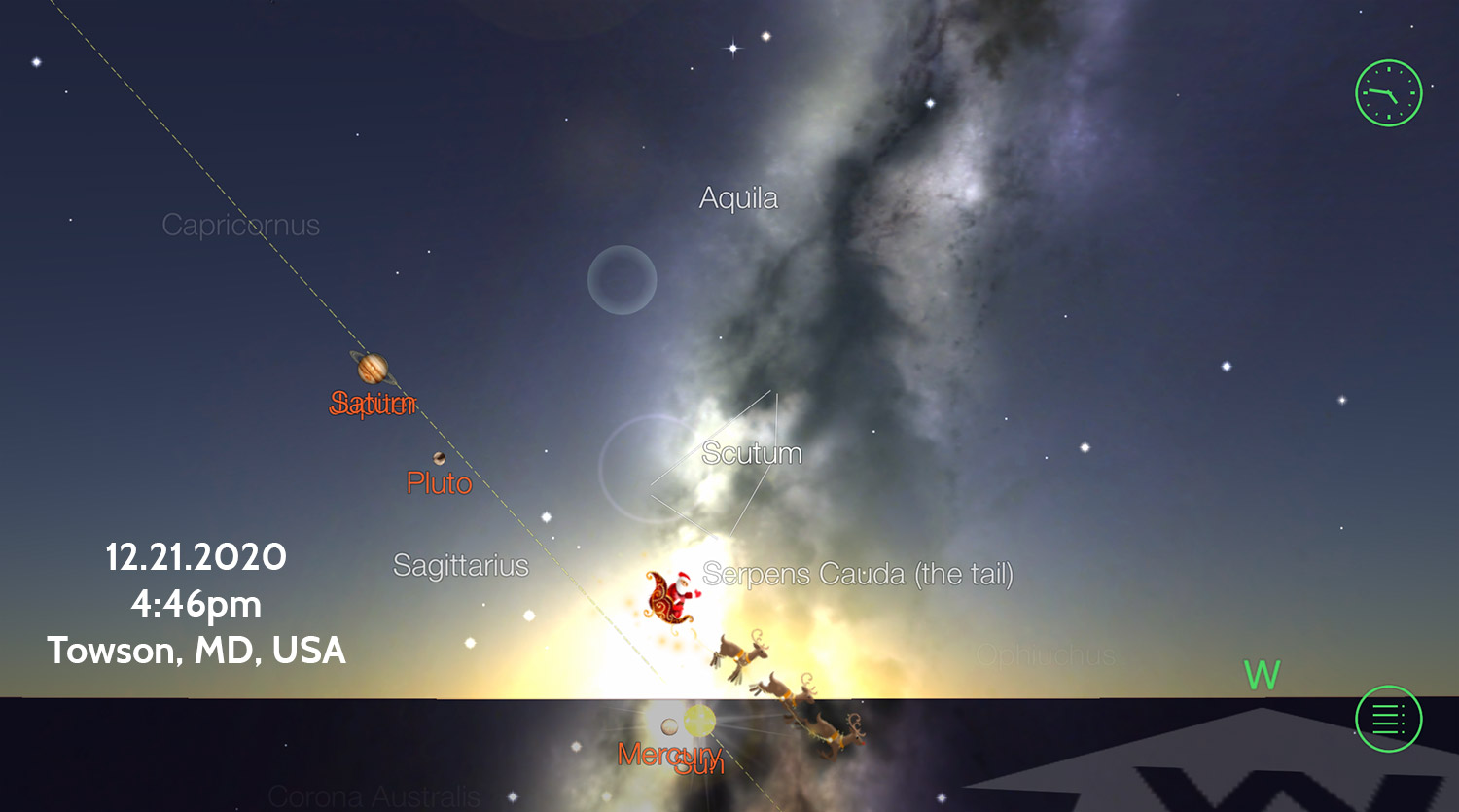
It’s SANTA, in alignment with the planets, stars & Sun! 12.21.2020
Don’t forget the other planets, not just Jupiter and Saturn, but especially keep Mars and Venus in mind. They also help you follow the patterns in the sky. 🪐🟠
Mars is another great planet to follow. It is also closer to Earth than most other planets. It can be quite bright but one of the cool things about it is that its change in brightness is quite noticeable as it moves closer or farther away from Earth. When it is at its brightest you can even notice its red color.
Right now, it’s visible when Saturn & Jupiter are in the sky. The Moon is also getting close to it, making for another great show.
Look up, about a 80-degree turn (from our location in Towson, MD), and see Mars. It’s higher up and a bit reddish. Use this as another reference point.
Venus rises up very early in the morning for yet another. Venus is the brightest planet in the sky because it is highly reflective. It is one of the most reflective bodies in the solar system. It reflects about 70% of the sunlight that strikes its atmosphere. Only the Sun and Moon are brighter in the sky (don’t forget that you should never look directly at the Sun without the proper protection.) This is why Venus can be seen at sunrise or sunset so easily. It is also bright because it is so close.
Both of these planets are visible without any special equipment, just your eyes! 👀
Jupiter is also a bright planet because while much farther away it is REALLY big.
So follow the planets and notice how their place in the sky, compared to the Sun, Moon, and each other, changes from day to day and throughout the year.
You can use the many tools like timeanddate.com, Stellarium, and apps like StarWalk to help you. (Starwalk is available for mobile, Kindle & Windows!)
Becoming familiar with these patterns can help you then follow the constellations and the stars. After a whole career of studying the Sun, my change in my routine of 2020 has created space (pun intended) for a new hobby. My wife & The Sun Today co-founder, Linda, started watching while walking. She encouraged me to get outside, take a break, and stretch after a long day of Zoom meetings. It’s been great to talk to neighbors (while socially distanced) and start looking at the passage of time in a new (but old) way.
One last tip…take note of when & where the sunset is in your location on the December solstice! ☀️
Backyard sky observing can be as easy as stopping to #lookup and documenting what you see with your phone’s camera.
It’s super easy to start your skywatching by taking some photos of the sun on the solstice. Observe the sunrise, how high it is in the sky, and then where it is while it’s setting.
You can do this at various times during the year. Maybe set a reminder to do it monthly. Use landmarks around you to help you remember where it is. Check back on the next March equinox, June solstice, September equinox, & next year’s December solstice!
From this same location, look what can be observed! The sun, moon, Saturn & Venus. In Winter 2019-2020, Venus was passing through these woods as the “Evening Star”. Now it rises early and is the “Morning Star”. Mars also passes overhead (not pictured). The Orion constellation brightly shines through on cold, clear Winter nights.
Check out the photos from Linda’s observations…click for larger images:
Be a skywatcher!! The next best thing to being a Skywalker.
Alex gets half of this…he’s just a Young, but a Young skywatcher. 🙂

But wait, there’s more…skywatching is also taking a moment to breathe. It’s been a rough year. <3 Watching the sky is one of the best things that we have done to start adding in some moments to pause. Sometimes we feel joy, sometimes we feel sadness but allow ourselves to let it flow through so we can make it through another day. It’s “mindfulness” in practice. It’s our Jedi Mind trick!


